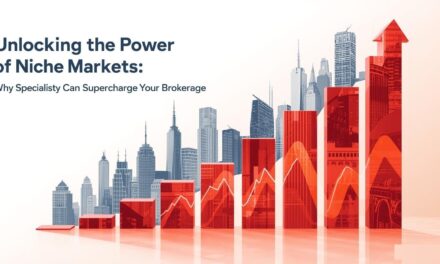Too Busy to Read? We’ve Got You.
Get this blog post’s insights delivered in a quick audio format — all in under 10 minutes.
This audio version covers: Australia’s Mortgage Revolution: Why Brokers Now Settle 77% of Home Lo[ans]
Brokers Holding Strong: 76.8% Market Share Confirms Broker Authority
The March 2025 quarter marks a significant milestone for the Australian mortgage broking industry. According to the latest data from research group Cotality's Comparator, commissioned by the MFAA, mortgage brokers settled a record 76.8% of all new residential home loans. This figure represents the highest market share ever recorded, underscoring the consistent and growing reliance of Australian borrowers on the broker channel.
In This Report
The Unstoppable Rise: Q1 2025 Market Share at a Glance
The March 2025 quarter has delivered a resounding affirmation of the mortgage broker channel's authority in Australia. The latest data, compiled by Cotality's Comparator for the Mortgage and Finance Association of Australia (MFAA), reveals that mortgage brokers settled a record 76.8% of all new residential home loans. This achievement represents the highest market share ever recorded, marking a pivotal moment for the industry.[1, 2]
This record-breaking performance is not an isolated event but rather the continuation of a robust and consistent growth trajectory. The 76.8% market share in Q1 2025 represents an increase of 0.8 percentage points from the 76.0% recorded in the December 2024 quarter.[1] Looking further back, the growth is even more pronounced: it is 2.7 percentage points higher than the 74.1% seen in the March 2024 quarter, and a substantial 7.2 percentage points higher than the 69.6% recorded in the March 2023 quarter.[1] This sustained upward trend, evident across multiple quarters, suggests a fundamental and long-term shift in consumer preference towards the broker channel. Historically, the December quarter often saw a slight dip in market share, but even this trend was bucked in December 2023, further reinforcing the sustained nature of this growth.[3, 4] This pattern indicates that the broker channel is increasingly becoming the default choice for a growing majority of Australian borrowers. For individual brokerages, this translates to a larger addressable market and a stronger foundation for business growth, provided they can effectively capture and convert this expanding demand.
Beyond percentages, the sheer volume of loans settled by brokers also reached new heights. In dollar terms, mortgage brokers facilitated an impressive $99.37 billion in new residential home loans during the March 2025 quarter.[1, 2] This substantial figure reflects a robust 21.97% increase, or $17.90 billion, compared to the $81.47 billion settled in the March 2024 quarter. It also stands as the highest value of new residential lending ever recorded for a March quarter.[1]
MFAA CEO Anja Pannek noted that since the Reserve Bank of Australia's (RBA) interest rate cut in February, members have reported increased levels of inquiries and activity across all borrower types, including those looking to refinance, invest in property, or buy their first home.[1] This surge in inquiries, coupled with the record settlement values, points to a significant increase in demand flowing into the broker channel. While this heightened activity is highly positive, it also highlights a critical operational requirement for brokerages. As demand increases, it becomes imperative for brokerages to ensure their internal systems are robust and efficient. Without streamlined processes for lead management, pre-approval nurturing, and lodgement efficiency, the increased market share may not fully translate into individual business growth. The focus must be on converting this heightened demand into settled loans, preventing potential bottlenecks that could hinder growth.
| Quarter | Market Share (%) | Value of Loans Settled ($B) |
|---|---|---|
| March 2023 | 69.6 | 78.59 |
| December 2023 | 71.8 | 94.06 |
| March 2024 | 74.1 | 81.47 |
| December 2024 | 76.0 | N/A |
| March 2025 | 76.8 | 99.37 |
Beyond the Numbers: Why Borrowers Choose Brokers
The record 76.8% market share is more than just a statistical achievement; it represents a powerful vote of confidence from Australian consumers. This escalating preference for brokers is deeply rooted in several key factors that underscore the unique value proposition the broker channel offers.
A cornerstone of this preference is the unrivalled level of consumer trust placed in mortgage brokers. A staggering 82% of clients who engaged with a mortgage broker expressed a high level of trust, with 39% indicating they "completely trust" their broker.[1] This stands in stark contrast to significantly lower trust levels reported for lender representatives.[1] This high degree of trust persists even amidst challenging economic conditions, where one in three Australian borrowers is experiencing mortgage stress and 42% report a deterioration in their financial situation.[1] This demonstrates that brokers are perceived as reliable and empathetic advisors, particularly during times of financial uncertainty.
A significant driver of this trust and preference is the Best Interests Duty (BID). This legal obligation requires brokers to prioritize the needs of their clients, a crucial consumer protection that resonates strongly with borrowers. Research indicates that one in three borrowers expressed a greater likelihood of using a broker after learning about BID, leading to a 28% increase in broker preference.[1] MFAA CEO Anja Pannek explicitly cited BID as a key consumer protection that reinforces the overall broker proposition.[1, 2] This direct causal link between regulatory transparency and consumer choice underscores how BID serves not merely as a compliance requirement but as a powerful differentiator and trust amplifier for the broker channel. Actively communicating the Best Interests Duty to prospective clients can help bridge the existing knowledge gap, where approximately 40% of consumers do not fully understand broker services [1], thereby transforming a regulatory obligation into a compelling marketing advantage.
Beyond trust and regulatory protection, brokers offer unparalleled choice, personalization, and expert navigation. They provide access to a wide range of lenders and products, ensuring consumers have diverse options in a competitive market.[1, 5, 6] The personalized support and tailored guidance offered by brokers are highly valued, especially when individuals are making significant financial decisions such as purchasing a home or investing in property.[1, 3] This value is particularly evident among first-home buyers, with 43% of potential first-home buyers planning to utilize a mortgage broker for their loan needs.[1]
The current economic climate, marked by rising mortgage stress and impending fixed-rate rolloffs, further solidifies the broker's role as a vital financial navigator. Data indicates that nearly 60% of borrowers will transition off fixed-rate loans in the next 12 months, potentially leading to increased financial pressure for many.[1] This situation, combined with the high consumer trust in brokers, positions them as the go-to solution for individuals seeking to manage their financial situations through refinancing or restructuring. This underscores a significant opportunity for brokerages to proactively engage clients facing these challenges, offering solutions that reinforce their role as indispensable financial partners rather than just transaction facilitators.
Brokers as Navigators: Thriving in 2025 Market Conditions
The Australian mortgage landscape in 2025 is characterized by its dynamism, influenced by evolving interest rates, new government policies, and shifting housing market trends. In this complex environment, the expertise of a mortgage broker is more critical than ever in helping borrowers navigate complexities and capitalize on emerging opportunities.
Interest rate fluctuations remain a significant factor. Following the RBA's interest rate cut in February, an increase in inquiries and activity was reported within the broker channel.[1] However, a slight uptick in interest rates is anticipated in the second quarter of 2025, prompting many borrowers to explore fixed-rate mortgages to lock in favorable terms.[7] In this scenario, brokers are invaluable. They possess the expertise to compare options across multiple lenders, helping borrowers find the most competitive offers tailored to their specific needs amidst these fluctuations.[7]
New government schemes, particularly for first-time homebuyers, also present a crucial area where brokers provide immense value. The First Home Guarantee (FHG) scheme, for instance, has been expanded in 2025, enabling more Australians to secure a home with a smaller deposit, often as low as 5% without the need for Lenders Mortgage Insurance (LMI).[7] Brokers are instrumental in helping clients understand their eligibility for these schemes, ensuring they access the appropriate financial support to maximize their borrowing potential.[7] This directly aligns with the significant proportion of potential first-home buyers (43%) who plan to use a broker.[1]
The Australian housing market itself is evolving. After years of rapid price growth, a cooling trend has begun in 2025, creating opportunities for buyers who were previously priced out.[7] While prices are still expected to rise nationally by an average of 4-6% due to housing undersupply and strong buyer demand, growth rates can vary significantly by state and region.[8] Brokers are uniquely positioned to assist clients in making the most of this cooling trend, helping them secure the best mortgage terms and take advantage of potentially more affordable entry points into the market.[7] This adaptability to market conditions is a key aspect of the broker's value.
Furthermore, the mortgage industry is undergoing a rapid digital transformation, with 2025 expected to see even greater adoption of digital technologies, from online applications to AI-driven loan approvals.[7] Concurrently, green home loans are gaining popularity, offering competitive rates for energy-efficient properties.[7] Brokers are at the forefront of this digital evolution, embracing new tools to streamline the application process and provide faster, more tailored options to clients. They are also crucial in guiding clients through emerging options like green loans, ensuring borrowers can leverage favorable terms that support their sustainability goals.[7] The market's continuous evolution across interest rates, government policy, housing trends, digital adoption, and sustainable finance means that a broker's value proposition extends beyond finding the best rate today; it is about continuously adapting to and leveraging these changes for the client's benefit. This positions brokers as experts not just in traditional lending, but also in emerging areas, reinforcing their authority in a dynamic financial environment.
This detailed understanding of market conditions also provides a strong basis for specialization and targeted marketing. The specific market opportunities, such as the expanded FHG scheme or the growing interest in green loans, reveal distinct client segments with acute needs. The strategic advice for brokerages to build a niche brand that attracts specific audiences, rather than being a generalist, becomes particularly relevant here.[9] By focusing on these specific market opportunities, brokerages can refine their niche strategies. Instead of broad advertising, they can create highly targeted content and services—for example, "Navigating FHG in Sydney" or "Green Home Loan Options for QLD Investors." This focused approach allows for more effective marketing and deeper client engagement, enabling brokerages to convert broader market trends into tangible business growth.
The Industry's Voice: MFAA's Role and Future Outlook
The record market share achieved in Q1 2025 is a powerful testament to the collective strength and growing influence of the mortgage broking industry. This strength is actively championed and promoted by key industry bodies, most notably the Mortgage and Finance Association of Australia (MFAA).
MFAA CEO Anja Pannek described the 76.8% market share as a "powerful endorsement" of the broker channel, emphasizing the critical role brokers play in helping Australians achieve their financial goals.[1, 2] The MFAA consistently highlights that mortgage brokers are essential for fostering a competitive mortgage market, ensuring consumers have access to a wide array of choices and vital consumer protections, including the Best Interests Duty (BID).[1] This advocacy underscores the systemic value brokers bring to the broader financial ecosystem.
In a significant move to further bolster the channel, the MFAA launched its largest ever national consumer campaign on May 29th.[1, 2] This extensive campaign, running across multiple digital channels, is designed to encourage all Australians to connect with an MFAA-accredited broker. Its primary objective is to drive further engagement between borrowers and MFAA brokers by highlighting the professionalism and expertise of its members.[1, 2] This initiative creates a positive feedback loop: as the MFAA increases public awareness and trust in brokers through its advocacy, individual brokerages benefit from a more receptive market, which in turn reinforces the industry's overall market share. Brokerages should be aware of this broader campaign and consider aligning their local marketing efforts with its messages to maximize impact and capitalize on the enhanced public perception.
While the MFAA's efforts and the market share report rely on data from leading aggregators [1], it is important for individual brokerages to consider strategic independence. The focus on building a brokerage's own brand equity and an integrated tech stack, rather than solely relying on an aggregator's brand, technology, and processes, remains crucial for long-term success. The record market share confirms the channel's strength and the increasing consumer preference for brokers, but it does not automatically guarantee individual brokerage success. Brokerages must leverage this rising tide by actively building their unique brand and operational efficiency. This proactive approach ensures they capture a significant portion of the increased market demand and build a valuable, saleable asset, rather than passively benefiting from general industry growth.
Key Takeaways for Your Brokerage
The 76.8% market share is a powerful mandate. It is a clear signal that Australian borrowers value the expertise, choice, and personalised service provided by mortgage brokers more than ever. Here’s how brokerages can leverage this momentum to further strengthen their position and drive sustained growth:
- Amplify the Value Proposition: Brokerages should not assume clients fully understand the comprehensive nature of their services. It is essential to actively communicate independence, the extensive range of choices offered, and, critically, the Best Interests Duty (BID). This direct communication strategy addresses the existing consumer knowledge gap [1] and capitalizes on the significant trust advantage brokers hold over direct lenders.
- Become the Go-To for Market Navigation: Position the brokerage as the expert guide for navigating current market conditions. This involves proactively reaching out to clients approaching fixed-rate rolloffs, offering timely insights on government schemes for first-home buyers, and highlighting opportunities within the cooling housing market. The ability to simplify market complexities and provide tailored solutions is a key differentiator.[7]
- Optimise Operations for Growth: With increased inquiry levels [1], the efficiency of internal processes becomes paramount. Brokerages should review their client conversion processes for any inefficiencies between pre-approval and lodgement, as this stage can be a significant bottleneck. Investing in robust systems and considering team specialization—such as dedicated Client Service Managers for client relationships and Loan Processors for file management—can ensure leads are efficiently converted into settled loans, directly translating market share gains into tangible business growth.
- Embrace Digital and Niche Opportunities: Leverage digital tools to streamline operations and explore niche markets. Whether it involves specializing in green home loans or becoming the expert for a specific demographic or property type, a focused approach can significantly enhance marketing effectiveness and conversion rates. This allows brokerages to capture a larger, more targeted slice of the expanding market.
Conclusion: Broker Authority, Undeniable and Growing
The March 2025 quarter’s record 76.8% market share is more than just a number; it’s a powerful validation of the mortgage broker’s indispensable role in the Australian financial landscape. It confirms that borrowers overwhelmingly choose brokers for their expertise, the unparalleled choice they offer, and the critical consumer protections like the Best Interests Duty. As the market continues to evolve, the position of brokers as trusted advisors and navigators will only become more central.
This is a pivotal moment for brokerages to lean into that authority. By continually refining their value proposition, optimising their operations, and adapting proactively to market shifts, brokerages can convert this industry-wide success into sustained growth for their own businesses. The data is clear: brokers are holding strong, and their authority is more confirmed than ever.
Get More Insights

![Australia’s Mortgage Revolution: Why Brokers Now Settle 77% of Home Lo[ans]](https://thebrokertimes.com.au/wp-content/uploads/2025/07/77-market-share-header-image-1280x640.png)



